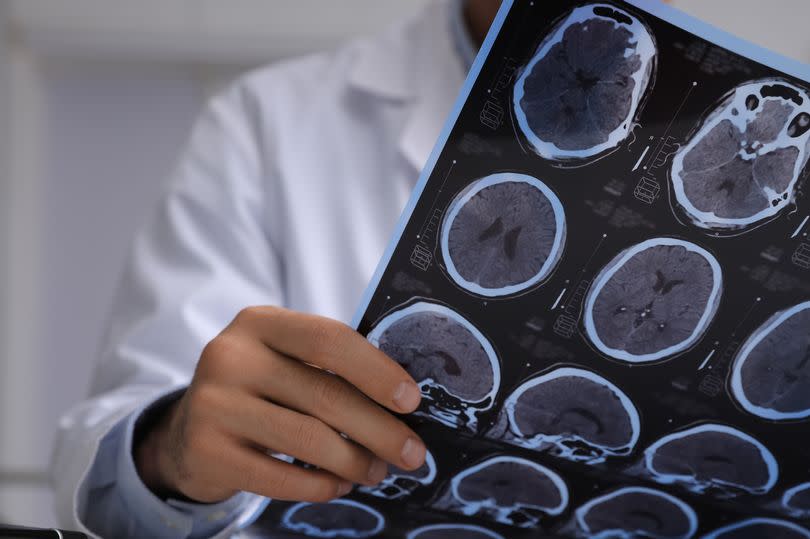A simple blood test can detect early signs of multiple sclerosis (MS), years before symptoms even appear.
US researchers have found a signal in the blood of people who have gone on to develop debilitating autoimmune diseases. This advance could lead to earlier treatment for thousands of people diagnosed with MS each year.
In about one in 10 cases of MS, scientists have found that the body starts producing a “specific” set of antibodies against its own proteins years before symptoms appear. These autoantibodies appear to bind to both human cells and common pathogens, which may explain the immune attacks on the brain and spinal cord that are hallmarks of MS.
Severe MS can lead to patients being wheelchair-bound, although new treatments can slow the progression of the disease and, for example, preserve the ability to walk. Early symptoms of MS, such as dizziness, spasms and fatigue, can mimic other conditions, and diagnosis requires careful analysis of an MRI scan of the brain.
Autoimmune diseases such as MS are thought to be partly caused by rare immune responses to common infections.
The research team from the University of California, San Francisco, (UCSF) hopes that the autoantibodies they discovered will be detected by a simple blood test, which will give patients priority to receive treatment.
“Over the past decades, there has been a move in the field to treat MS earlier and more aggressively with newer and more powerful therapies,” said the study’s senior author, Professor Michael Wilson, a UCSF neurologist. “A diagnostic result like this makes such early intervention more likely, giving patients hope for a better life.”

In 2014, Professor Wilson teamed up with Professor Joe DeRisi to devise better methods to identify the causes behind autoimmune diseases. They improved a technique called phage display immunosequencing (PhIP-Seq), which involves engineering viruses to display fragments of proteins on their surface, and used it to screen human blood for autoantibodies.
This method can detect autoantibodies against more than 10,000 human proteins, making it possible to investigate almost any autoimmune disease. In 2019, they used this technique to identify a rare autoimmune disease that appeared to originate from testicular cancer.
The team at UCSF believed that the phage display system could reveal the autoantibodies responsible for the immune attacks in MS, opening new ways to understand and treat the disease.
They collaborated with Professor Mitch Wallin from the University of Maryland to look for autoantibodies in the blood of people with MS. Blood samples were obtained from the US Department of Defense Serum Repository, which stores blood taken from military service members when they apply to join the armed forces.
The team examined blood from 250 MS patients collected after diagnosis as well as samples taken five or more years earlier when they enrolled. They also examined similar blood samples from 250 healthy veterans.
Using only a thousandth of a milliliter of blood from each hour, the scientists expected an increase in autoantibodies as the first symptoms of MS appeared. However, their results showed that 10 percent of MS patients had a “striking abundance” of autoantibodies even years before their diagnosis.
Each of these autoantibodies conformed to a chemical pattern similar to that found in common viruses including Epstein-Barr Virus (EBV), which is known to infect more than 85 percent of individuals all of which have previously been identified as a possible contributing factor for MS.
Years before their diagnosis, this subset of MS patients showed other signs that an immunological “war” was occurring within their brains. As published in the journal Nature Medicine, those patients with the autoantibodies showed elevated levels of neurofilament light (Nfl), a protein released during neuronal degradation.
Professor DeRisi said: “When we analyze healthy people using our technology, each person looks unique, with their own fingerprint of immunological experience, like a snowflake.”
“It’s when one person’s immunological signature looks like another person, and when they stop looking like a snowflake that we start to suspect something is wrong, and that’s what we found in these MS patients.”
To validate their findings, the team scrutinized blood samples from patients participating in the UCSF Foundation study. All of these patients showed neurological symptoms and many, though not all, were diagnosed with MS.
Interestingly, one in ten patients in the Origins study diagnosed with MS showed the same autoantibody pattern. This pattern was 100 percent predictive of a diagnosis of MS.
Professor Wilson said: “Diagnosis for MS is not always straightforward, as we do not have disease-specific biomarkers. We are excited that we have anything that can give us greater diagnostic certainty earlier. , to have a concrete discussion about starting treatment for each patient.”
Although there are still many questions about MS, the team believe they now have a definitive sign that MS is developing.
Study co-author Professor Stephen Hauser, director of UCSF’s Weill Neuroscience Institute, said: “Imagine if we could diagnose MS before some patients reach the clinic. It improves our chances of moving from suppression to cure.”
Don’t miss the latest news from across Scotland and beyond. Sign up to our daily newsletter.